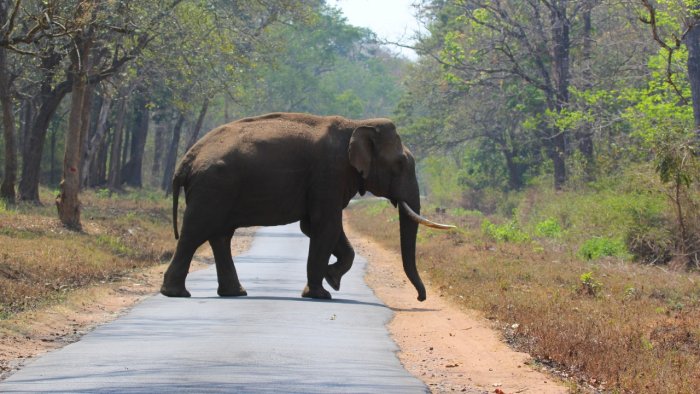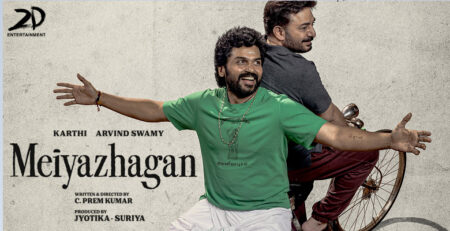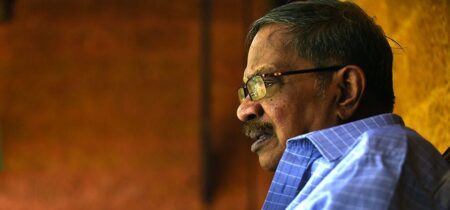With the decline of natural habitats, the human-elephant conflict has seen a surge, often leaving the majestic creatures as unwitting participants. “The Elephant Whisperers” documentary pays homage to the conservation endeavours aimed at preserving these habitats and raising awareness among communities about the perils of anthropocentrism.
The Tamil documentary, The Elephant Whisperers directed by Kartiki Gonsalves won the 95th Academy Award, on March 12, 2023, for the best documentary short film. Indian cinema’s victories in Oscar are few and this is the first-ever Indian film to get nomination and also to win in this category.
Kartiki’s debut film is about the caretaking of two elephant calves, Raghu and Ammu, in Theppakadu Elephant Camp at Mudumalai Tiger Reserve in Tamilnadu. “Theppakadu Elephant camp is one of the oldest elephant camps in Asia and was established around one hundred and forty years ago” as the film tells us. The title The Elephant Whisperer might be influenced by a book of the same name, published in 2009 by South African author and conservationist Lawrence Anthony along with journalist Graham Spence, about a herd of wild African elephants. The role of the Tamilnadu Forest Department in conservation, out of which the film took birth, is praiseworthy. The elephant camp has already rescued fifty-one baby elephants and reunited them with their herds in the forest.
Immersive experience
The film opens with Bomman, a person of the Kattunayakan tribe introducing himself. Kattunayakans, literally meaning lords of the forest, are an especially vulnerable tribal group of around only 1700 members settled in the Nilgiris biosphere spread over the states of Tamil Nadu, Karnataka and Kerala. “I am a Kattunayakan,” is in fact the first dialogue in the film announcing in a way the importance of the collective life, de-emphasizing the individual subjectivity. We have a first-person narrative by both Bomman and his partner-turned-wife, Bellie in the film. Gonsalves was particular not to introduce any outside narrator, lest it would become a barrier between the subject and the viewer. The language is Kattunayakan when Bomman and Bellie talk to each other or to elephants and their tribespeople. Bomman and Bellie live with their community in their forest habitat. An alien narrator, for Kartiki, would rob the emotional connect she wanted to have with the indigenous community. Besides, the film did not have any sets and was involved in shooting with the smallest number of people with one or two camerapersons, one sound person and one production person. One would feel that the exclusive English title for the film, however, would not be in tune with the overall ethos of the film.
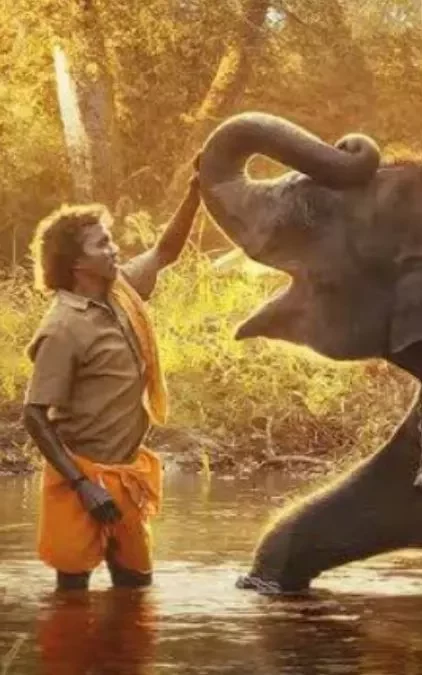
Kartiki’s background as a natural history photographer made her used to spend long periods with her subjects, enabling her to build trust in the indigenous people and understand them closely. She also made sure that she was listening to them and to their story without imposing her own visualization of their story.
As already implied this documentary belongs to the subgenre of nature documentary, also called environmental, conservationist, or wildlife documentary, which is now a major subgenre of documentary. Documentary is a medium that shapes us as public actors, in addition to helping us understand the world we are in and our role in it. A reality-shaping communication through its nearness to truth, documentaries are always based on real life, and could well be telling us something worthy of knowing. This film like other nature documentaries might be seemingly ideologically neutral, but at the same time debunks our attitudes to and relationship with nature.
The Oscar win would certainly help create awareness about the importance of preserving nature as well as the need for protecting non-human beings. The Oscar nomination itself saw the movie reaching 231 million subscribers in ninety countries and in several languages. The Elephant Whisperers would probably be one of the few nature documentaries to go beyond the domestic animals and then to reduce the remoteness of wild animals and indigenous groups from humans.
Co-existence of man and nature
The film is presented as having four protagonists, two humans and two elephants; Bomman, Bellie, Raghu and Ammu. In a culture where the elephant is held captive, paraded and revered for religious purposes the project of keeping animals for the sake of their protection is something that makes a difference. Kartiki announced that the film was “for women, for conservation, and for protection of wild species,” after receiving a cash prize from Tamilnadu Government. “We live off the forest, but we also protect it.” “We only take what we need,” says Bellie in the film and this profound, though humble, wisdom is something we so-called cultured human beings need to embrace in this era of climate change, environmental problems and enormous waste generation due to consumerism. That the film took or waited five years for its completion itself is a kind of resistance to the contemporary culture of instantaneity, and is in agreement with its environmental theme.
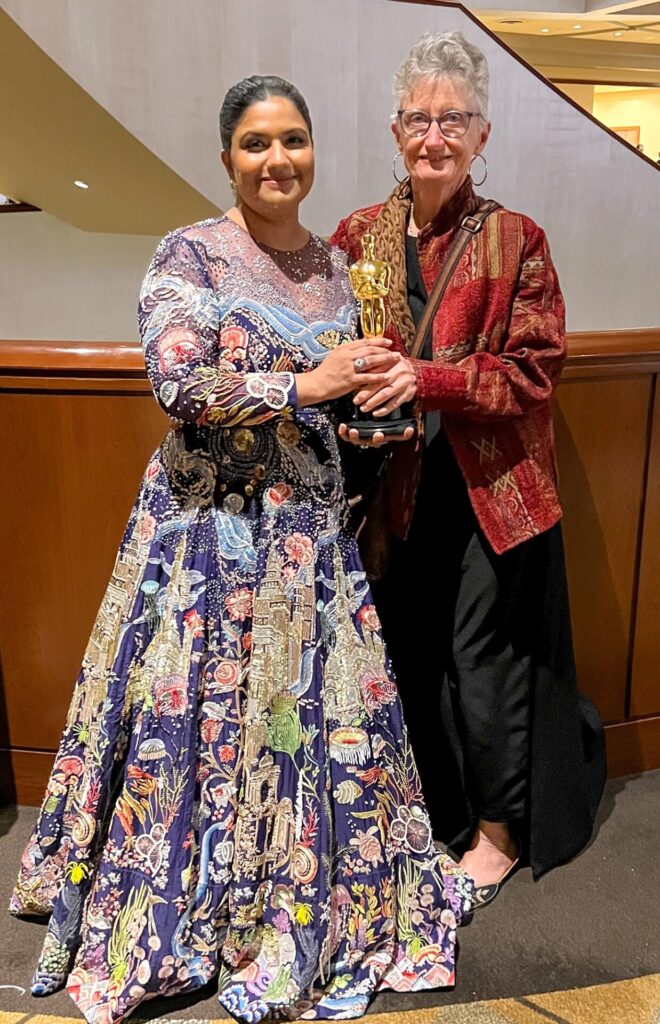
India is a country where we increasingly encounter human-animal conflict and wild elephants very often are involved in this, because of the loss or decrease of their natural habitat. Raghu the calf’s mother wandered from the forest into an adjacent village looking for food and water and got electrocuted. A stranded Raghu foraged for food and started carrying off fruits from nearby shops leading to stray dogs biting off his tail. After his wounds started getting infected, he reached the forest department and was assigned to Bomman. He with the help of Bellie nursed the baby elephant back to life. The sadness of tearful Bomman and stoic Bellie when they part with Raghu who is relentlessly taken to the elephant rehabilitation camp, is only surpassed by the Ammu’s misery.

Poiein suggests creativity is the Greek root of words like “poet” and “poetics” and in this sense, one can call this visual story poetics of fostering, and fostering the nonhuman. The film’s visual language is captivating and impossible to be un-seen. When the film opens the voice of the forest welcomes us, with the stream burbling and birds chirping standing out from other sounds, preceding the visuals by a few seconds. After presenting Bomman initially with a low-angle shot back onto the camera, the camera zooms into the multitude of other life forms in the wilderness. Film however does not over-sentimentalize nature, either in the form of total exclusion of the human or by just showing the forest as always serene.
The film has four cinematographers including Kartiki bringing in their own individual characteristics blending and mixing with the director’s singular vision making it an organic whole. Collectivity thus is an important feature of this documentary at different levels. There are so many exquisite shots and scenes which will make lasting impressions on anyone; even with a smattering of visual sense. Some of them are Raghu playing with the water in the tub, the exquisite sunset in the forest, Bomman’s ethereal travel at dusk on Raghu’s back, and several shots of close physical intimacy between the elephants themselves, and theirs with Bomman and Bellie. The wedding scene of Bellie and Bomman with Raghu and Ammu beside them shows how close-knit the four-member family is.
This Oscar-felicitated documentary would remain a seminal visual narrative as part of human efforts to sensitize our community against anthropocentrism and thus lead a more ecocentric life, which is long overdue. It is also significant that women, Kartiki and Guneet Monga as producer, not forgetting Bellie and her granddaughter Sanjana, are the crucial contributors to this production which makes clear, as the song goes, that “We have got to build the world together.”

